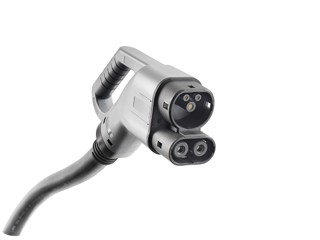The demand for on-street charge points to fuel electric vans is greatest in Birmingham, according to the Association of Fleet Professionals (AFP).
It has identified the UK’s top 20 local authorities with the highest need for kerbside charging in order for company van drivers to adopt electric vehicles (EVs).
Birmingham City Council tops the list followed by the City of Edinburgh Council, Croydon Council, Glasgow City Council and Newham. Local authorities in London feature heavily, accounting for nine of the top 20.
Paul Hollick, AFP chair, said: “The requirement for kerbside charging remains the single biggest obstacle to the adoption of electric vans for businesses. Without the ability to charge overnight, the whole operational model quickly falls apart.”
The findings are based on the AFP’s new national kerbside charging map, which was unveiled last month and shows - for the first time - exactly where UK businesses need kerbside charging to be installed close to the homes of their van-driving employees.
The creation of the map was a two-part exercise, says AFP. First, net zero analytics consultancy Field Dynamics produced a dataset that scored each household on whether there was space to park and charge a van for the country’s 28 million homes. This was then overlaid with records containing the addresses of 75,000 van drivers employed by AFP members.
The map is aggregated to a level of the UK’s 408 local authorities and the rankings are based on the number of drivers in each area who need kerbside charging.
Hollick continued: “We believe that around 60-70% of fleet van drivers need kerbside charging installed near to their home in order to use an electric van. Our aim is that each of them will have facilities installed within a safe 4-5 minute walk.
“What the map does is provide our members with hard data that allows them to approach partners such as local authorities and charging providers and show exactly where chargers need to be sited. This is a crucial step forward.
“These new rankings are a good indication of the places where most work needs to be done. What they have in common is that these are heavily populated, urban areas where there is a large proportion of homes without driveways such as terraced houses and apartments.”
The AFP is keen for more fleets to add their data to make the map ever more complete and would like to hear from businesses who would be able to contribute van driver information.
“This data is, of course, anonymised and handled in accordance with all relevant regulations,” said Hollick. “Details are available on our web site or by e-mailing us.”
A summary of the map is available from the AFP website while a detailed version can be obtained by e-mailing administration@theafp.co.uk.
The rankings in full are:
- Birmingham City Council
- City of Edinburgh Council
- London Borough of Croydon
- Glasgow City Council
- London Borough of Newham
- Leeds City Council
- London Borough of Enfield
- Bristol City Council
- Buckinghamshire Council
- Wiltshire Council
- London Borough of Lewisham
- London Borough of Waltham Forest
- London Borough of Greenwich
- London Borough of Southwark
- London Borough of Haringey
- London Borough of Haringey
- Medway Council
- Plymouth City Council
- Liverpool City Council
- Portsmouth City Council
























Login to comment
Comments
No comments have been made yet.